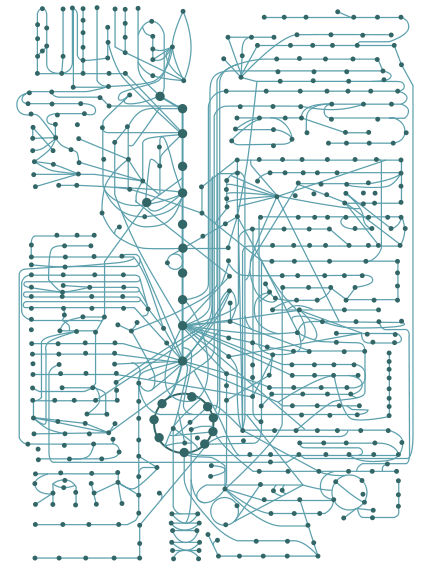Metabolism of Biomolecules
Course categoryBiochemistry
Before we study the details of metabolism, we must review the structure and functions(Chemistry) of
the four major classes of biomolecules.
Introduction
What’s going on in your body right now? Your first answer might be that you’re hungry, or that your muscles are sore from a run, or that you feel tired. But let’s go even deeper, moving past the layer of your consciousness and looking at what’s going in your cells.
If you could peek inside of any cell in your body, you’d find that it was a remarkable hub of activity, more like a busy open-air market than a quiet room. Whether you are awake or sleeping, running or watching TV, energy is being transformed inside your cells, changing forms as molecules undergo the connected chemical reactions that keep you alive and functional.
Overview of metabolism
Cells are constantly carrying out thousands of chemical reactions needed to keep the cell, and your body as a whole, alive and healthy. These chemical reactions are often linked together in chains, or pathways. All of the chemical reactions that take place inside of a cell are collectively called the cell’s metabolism.
To get a sense of the complexity of metabolism, let's take a look at the metabolic diagram below. To me, this mess of lines looks like a map of a very large subway system, or possibly a fancy circuit board. In fact, it's a diagram of the core metabolic pathways in a eukaryotic cell, such as the cells that make up the human body. Each line is a reaction, and each circle is a reactant or product.
Image credit: "Metabolism diagram," by Zlir'a (public domain)
Abstract diagram representing core eukaryotic metabolic networks. The main point of the diagram is to indicate that metabolism is complex and highly interconnected, with many different pathways that feed into one another. In the metabolic web of the cell, some of the chemical reactions release energy and can happen spontaneously (without energy input). However, others need added energy in order to take place. Just as you must continually eat food to replace what your body uses, so cells need a continual inflow of energy to power their energy-requiring chemical reactions. In fact, the food you eat is the source of the energy used by your cells!
To make the idea of metabolism more concrete, let's look at two metabolic processes that are crucial to life on earth: those that build sugars, and those that break them down.
Anabolic and catabolic pathways
The processes of making and breaking down glucose molecules are both examples of metabolic pathways. A metabolic pathway is a series of connected chemical reactions that feed one another. The pathway takes in one or more starting molecules and, through a series of intermediates, converts them into products.
Metabolic pathways can be broadly divided into two categories based on their effects. Photosynthesis, which builds sugars out of smaller molecules, is a "building up," or anabolic, pathway. In contrast, cellular respiration breaks sugar down into smaller molecules and is a "breaking down," or catabolic, pathway.
Anabolic pathway: small molecules are assembled into larger ones. Energy is typically required.
Catabolic pathway: large molecules are broken down into small ones. Energy is typically released.
Image credit: OpenStax Biology.
Anabolic pathways build complex molecules from simpler ones and typically need an input of energy. Building glucose from carbon dioxide is one example. Other examples include the synthesis of proteins from amino acids, or of DNA strands from nucleic acid building blocks (nucleotides). These biosynthetic processes are critical to the life of the cell, take place constantly, and use energy carried by ATP and other short-term energy storage molecules.
Catabolic pathways involve the breakdown of complex molecules into simpler ones and typically release energy. Energy stored in the bonds of complex molecules, such as glucose and fats, is released in catabolic pathways. It's then harvested in forms that can power the work of the cell (for instance, through the synthesis of ATP).
One final but important note: the chemical reactions in metabolic pathways don’t take place automatically, without guidance. Instead, each reaction step in a pathway is facilitated, or catalyzed, by a protein called an enzyme. You can learn more about enzymes and how they control biochemical reactions in the enzymes topic.


